Common birds that start with the letter “T” include the Tennessee Warbler, Thick-Billed Longspur, Thick-Billed Murre, Townsend’s Solitaire, Townsend’s Warbler, Tree Swallow, Tricolored Blackbird, Tricolored Heron, Tropical Kingbird, Trumpeter Swan, Tufted Titmouse, Three-toed Woodpecker, and the Turkey Vulture. Read on to learn more about these amazing birds!
Are you looking for birds that begin with the letter T? Check out this comprehensive list of common birds that start with T. You will find everything from warblers and swallows to swans and vultures. Let’s dive in!
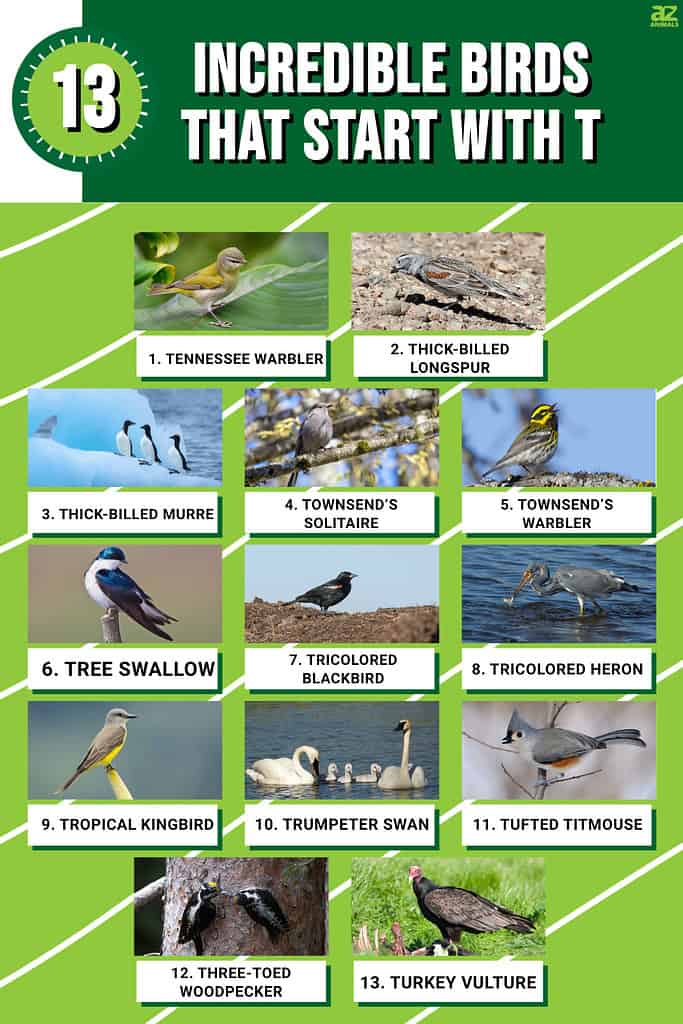
1. Tennessee Warbler – Leiothlypis peregrina
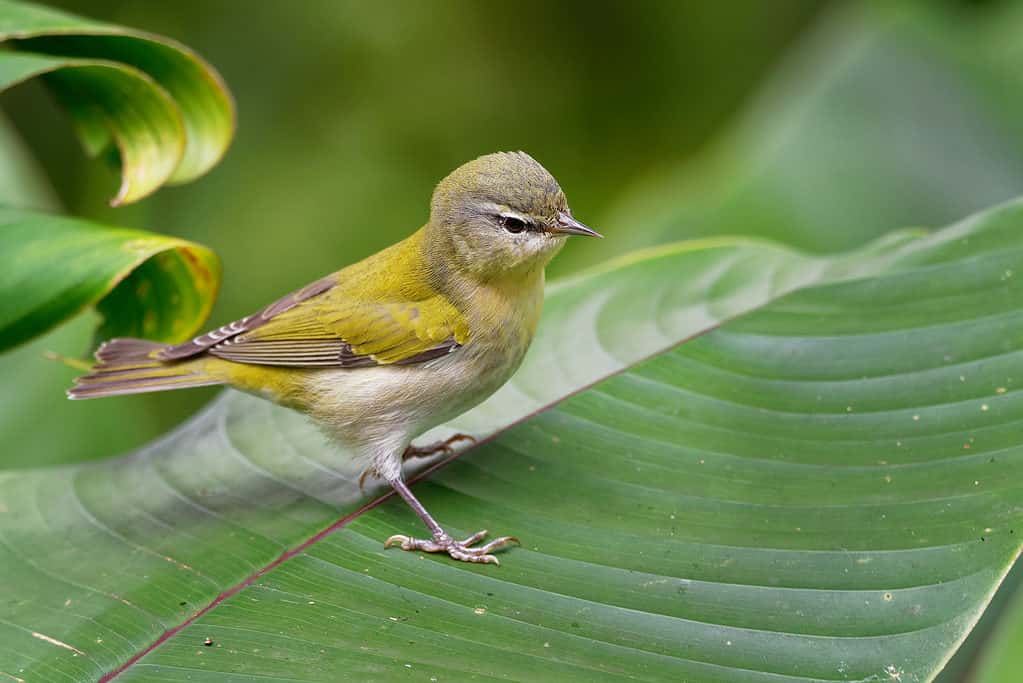
Tennessee warblers flutter high in the trees.
©Martin Pelanek/Shutterstock.com
This dainty warbler breeds in Canadian boreal forests, migrates through the eastern half of the United States, and winters in Central and South America. Tennessee warblers are a duller color than other species, featuring gray, chestnut, and olive coloring. In the United States, you can find them in early May and late September in semi open forests. They stay high up in the treetops, and you can see them fluttering from branch to branch.
2. Thick-Billed Longspur – Rhynchophanes mccownii
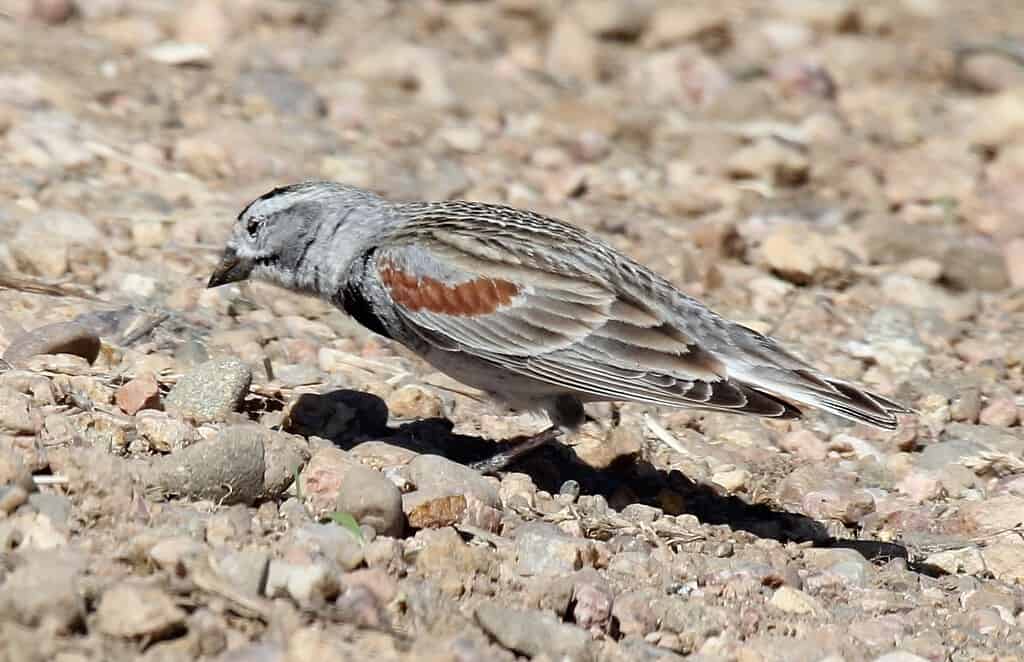
Thick-billed longspurs live in endangered prairies.
©CC BY-SA 2.0 – License
The thick-billed longspur lives in the Central United States, where it breeds, migrates, and winters. It lives in open spaces, such as endangered shortgrass prairies, rangeland, and plowed fields. You are most likely to find them at dawn in late April and May when males sing their morning songs. And in winter, you can find them in fields, where they flock to eat seeds and grains. These birds are best known for their territorial aerial displays, where males fly into the open sky and float down while singing their sweet songs.
3. Thick-Billed Murre – Uria lomvia

Thick-billed murres nest in sea cliff colonies.
©Danita Delimont/Shutterstock.com
This tuxedo-wearing bird is an Arctic species notable for its enormous sea cliff colonies. While they don’t live near penguins, thick-bulled murre is often mistaken for them. But you will quickly realize these Arctic birds are not penguins once you see them fly. When they’re not nesting, these birds spend much of their time out at sea, diving into the frigid water and landing on ice sheets. And they can dive deeper than most birds, reaching over 600 feet below the surface.
4. Townsend’s Solitaire – Myadestes townsendi

Townsend’s solitaire is a type of thrush.
©Feng Yu/Shutterstock.com
The elegant gray Townsend’s solitaire is a bird of the west. These songbirds are a type of thrush, but they are often mistaken for flycatchers. They live in evergreen mountain forests and juniper woodlands. They breed in Alaska and Western Canada and winter throughout the Western United States. Some populations also live year-round in the U.S. The Townsend’s solitaire likes to sit completely still on trees and shrubs, but you can recognize them by their jumbled songs.
5. Townsend’s Warbler – Setophaga townsendi
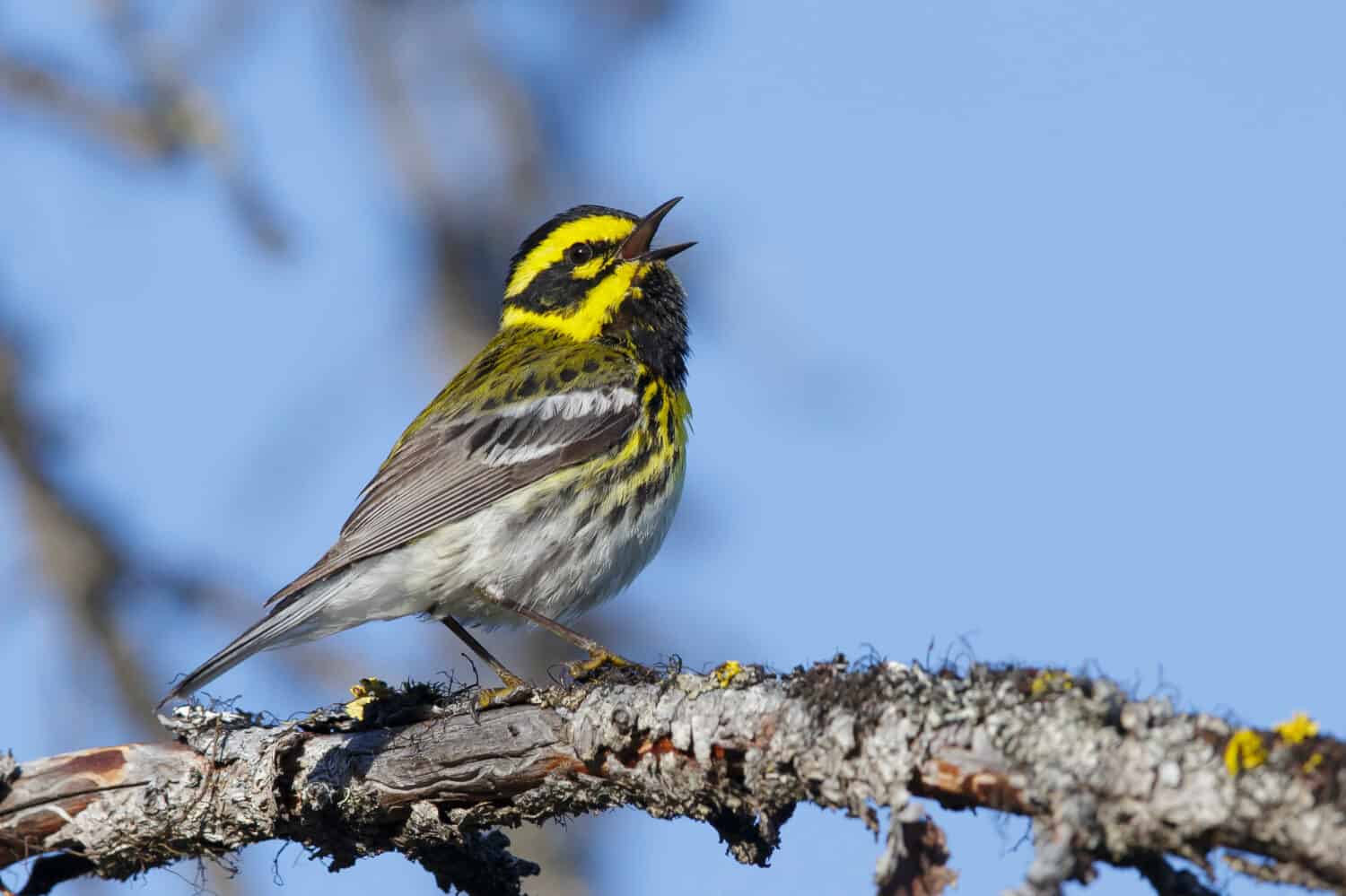
Townsend’s warbler is black and bright yellow.
©Agami Photo Agency/Shutterstock.com
The Townsend’s warbler is a colorful black and bright yellow bird of North America. They flutter around in the tops of trees, foraging for tiny insects and larvae. This warbler breeds in Western Canada, migrates through the Western United States, and winters in Mexico, Central America, and all along the Pacific Coast. In fact, winter is the best time to see them, as they like to inhabit Oregon, Washington, and California backyards.
6. Tree Swallow – Tachycineta bicolor
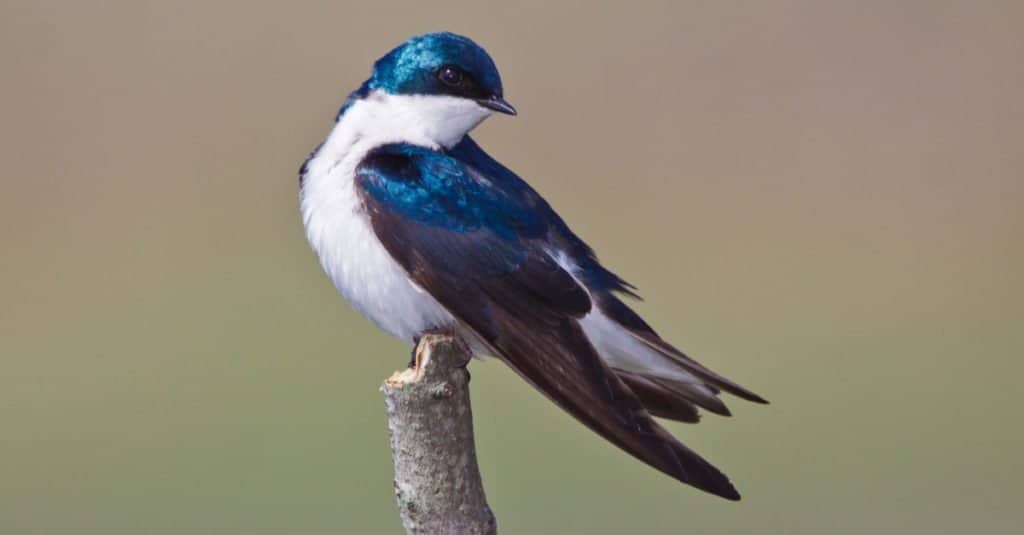
The
tree swallow
lives in lush summer fields.
©Elliotte Rusty Harold/Shutterstock.com
Tree swallows are beautiful birds with iridescent blue-green plumage. They are familiar birds in North America, breeding across Canada and the Northern United States and wintering in the Southern U.S., Mexico, and Central America. In the south, you can find them in lush summer fields. In the northern regions, they live in freshwater wetlands and frequently visit backyards. You can attract these birds by building nesting boxes on your property if you live within their breeding range.
7. Tricolored Blackbird – Agelaius tricolor
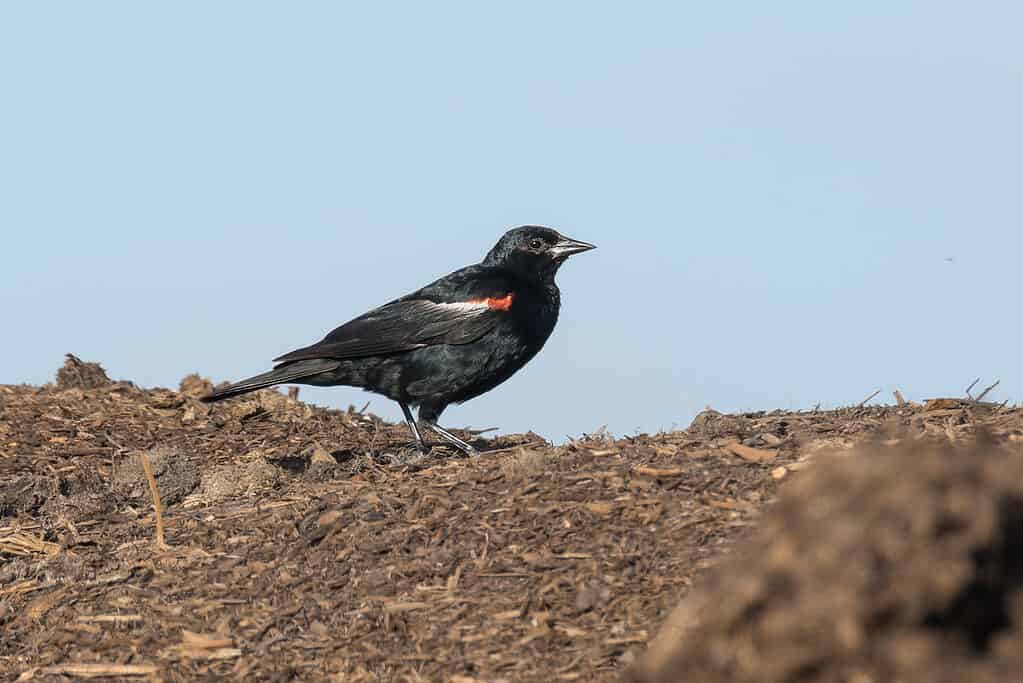
The endangered tricolored blackbird (
Agelaius tricolor) is endemic to Western USA.
©iStock.com/Wichyanan Limparungpatthanakij
The tricolored blackbird is a unique species adorning red shoulder patches and a very limited range. These birds live year-round in California’s Central Valley, where they inhabit marshes and croplands. They are a rare sight, especially because of their declining population due to habitat loss. But if you do get to see one, they are a real treat. Tricolored blackbirds are flashy and noisy. And can be distinguished by their catlike songs.
8. Tricolored Heron – Egretta tricolor
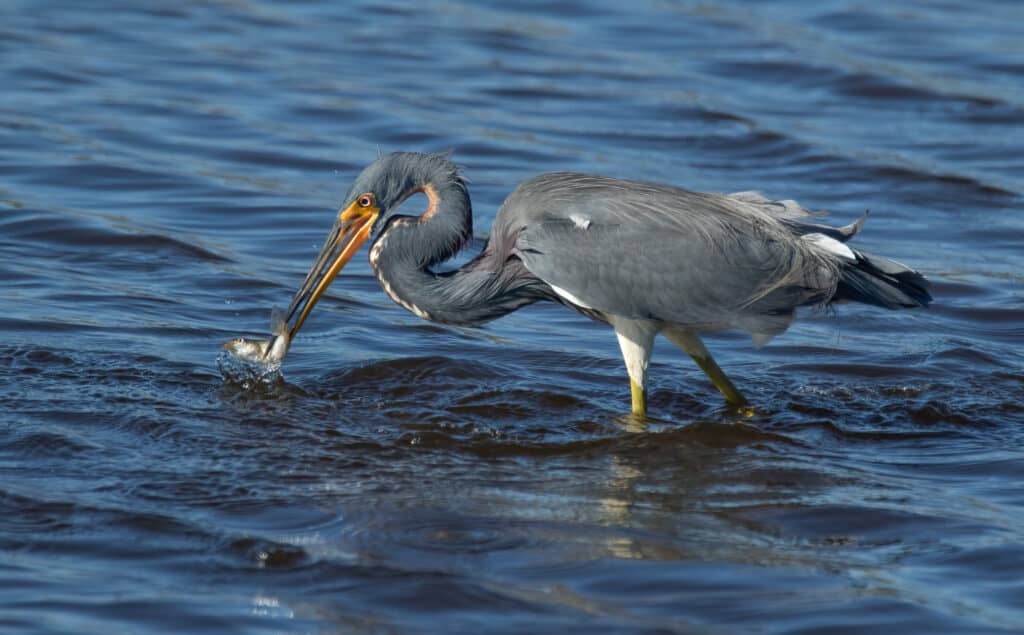
You can find the tricolored heron belly-deep in coastal lagoons.
©iStock.com/MattCuda
These sleek, elegant wading birds are associated with saltwater. The tricolored heron features bluish-gray and light purple plumage, with a broad, white stripe running down its neck. They are small for herons, and you can find them year-round along the East Coast and the Gulf of Mexico. They also winter in Mexico, Central America, the West Indies, and South America. You can find the tricolored heron in coastal estuaries and southern salt marshes.
9. Tropical Kingbird – Tyrannus melancholicus
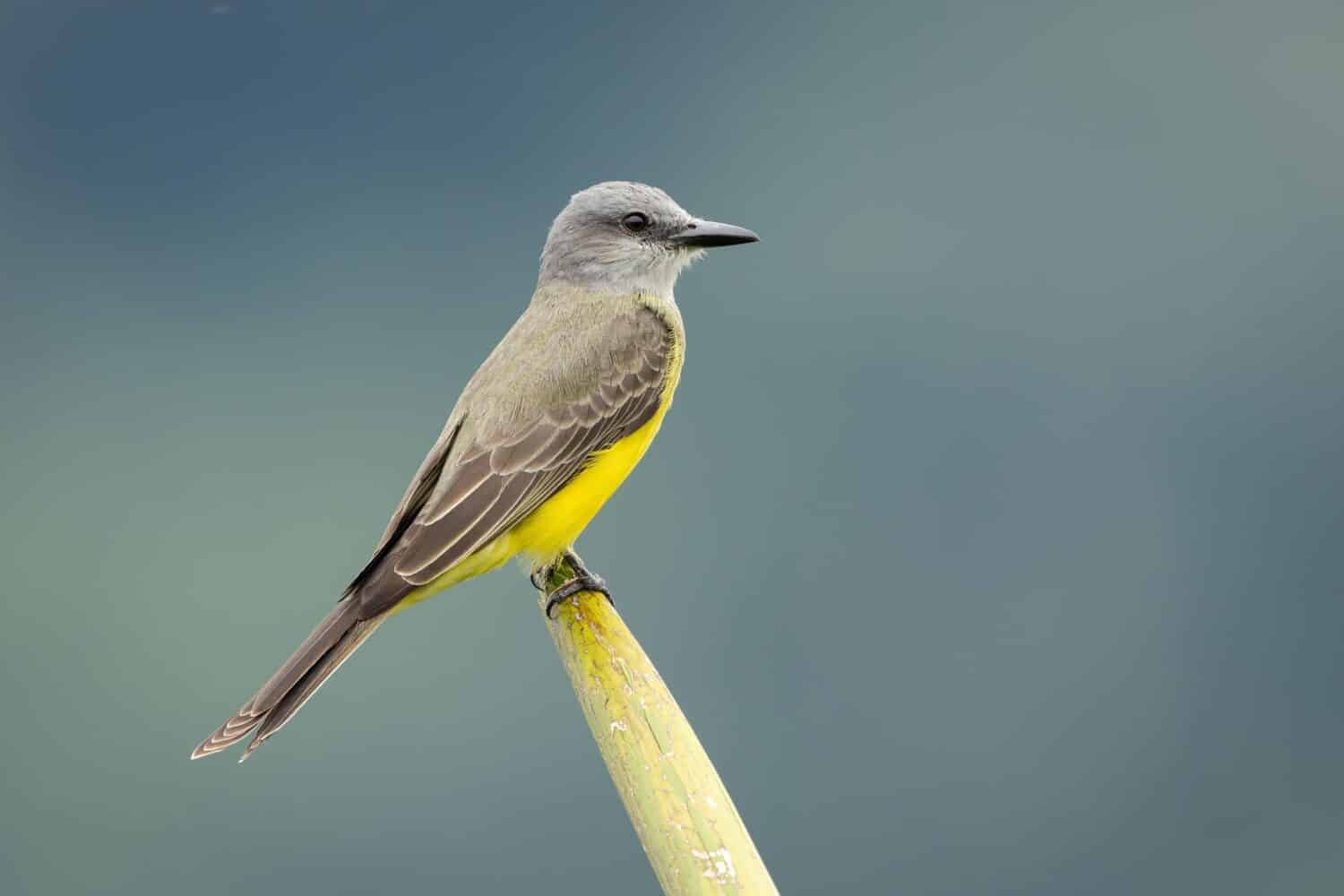
The tropical kingbird rests on fences and utility lines.
©Wim Hoek/Shutterstock.com
Tropical kingbirds are flycatchers common in tropical regions of the Americas, from the Southern United States, Mexico, Central America, and most of South America. In the United States, you can find these birds in the very southern regions of Texas and Arizona. Look for them on fences, in trees, and on utility lines near towns, water sources, and ranches. They like to nest in cottonwood trees, often near species of the blackbird family, where they benefit from joining species chasing away predators.
10. Trumpeter Swan – Cygnus buccinator – The Largest Bird That Starts With T

Trumpeter swans, who can live as long as 24 years, form monogamous pair bonds as early as 20 months.
©iStock.com/Zeke1
Beautiful trumpeter swans are the largest species of waterfowl native to North America. They can reach six feet long and weigh over 25 pounds! To fly, they must lumber down a runway before they can take off. Despite their size, this bird is still very graceful and elegant, featuring a long neck and bright white plumage. Trumpeter swans breed in remote wetland areas in Alaska, Canada, and around the Great Lakes region. They winter in inland lakes of the U.S. and along the Western Canadian coast.
11. Tufted Titmouse – Baeolophus bicolor

Tufted titmice produce a high whistling song.
©Brian A Wolf/Shutterstock.com
The tufted titmouse is a tiny bluish-gray bird with a high whistling song. These titmice live year-round in the Eastern United States, where they inhabit deciduous forests, parks, and backyards. Look for them flying around tree canopies and hanging from the ends of twigs. They also like to hang out at backyard feeders, where they will bring large seeds back to their perch before cracking them open.
12. Three-toed Woodpecker – Picoides dorsalis
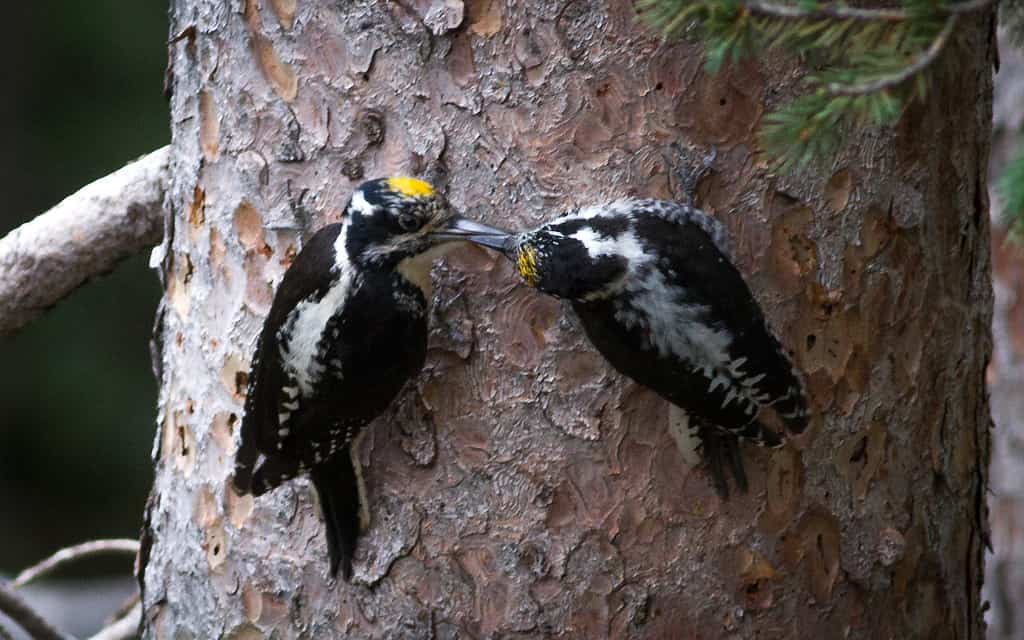
Three-toed
woodpecker
lives in disturbed mountain forests.
©Fyn Kynd / CC BY-SA – License
This small woodpecker is a year-round resident of Alaska, Canada, and the Northern United States, especially the Northwest. It lives in disturbed mountain forests, where it feeds on bark beetle infestations by foraging on dead trees. Unlike other woodpeckers, this species only has three toes, which gives it an advantage for pecking. The three toes allow it to lean further away from the tree and peck harder. This species is closely related to the Eurasian woodpecker and the black-backed woodpecker.
13. Turkey Vulture – Cathartes aura
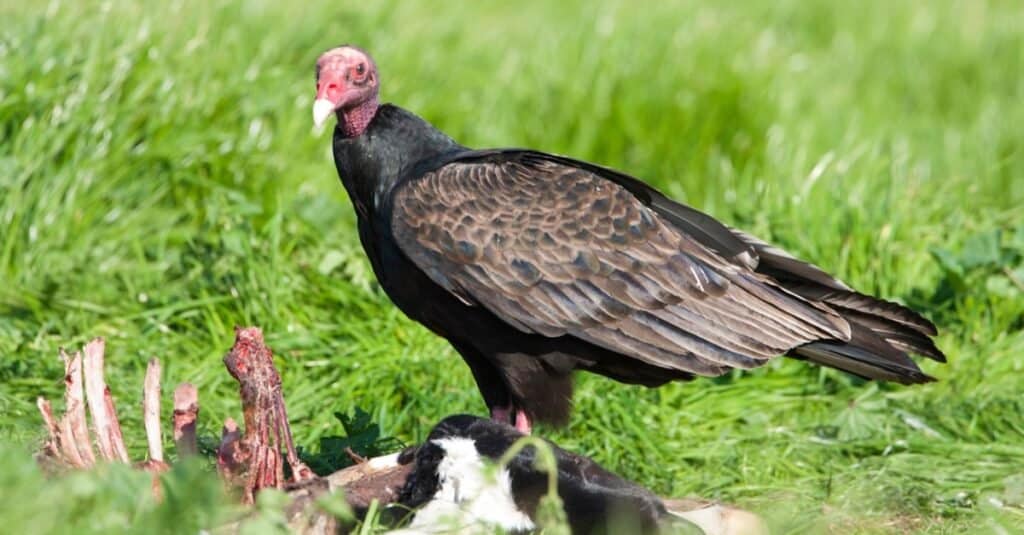
The turkey vulture’s method of self-defense is to vomit their food, which they can send sailing 10 feet!
©Agami Photo Agency/Shutterstock.com
If you see a large bird soaring in the air with its wings in a V-shape and moving in circles, it’s most likely a turkey vulture. While this vulture only weighs about three pounds, it features a 6-foot wingspan! They ride the thermals in the air as they search for carcasses, preferably fresh. You are likely to find them near fields and roadsides, where they wait for something to die.
Birds That Start With T: A Recap of the Top 13
| Common Name | Scientific Name |
|---|---|
| Tennessee Warbler | Leiothlypis peregrina |
| Thick-billed Longspur | Rhynchophanes mccownii |
| Thick-bulled Murre | Uria lomvia |
| Townsend’s Solitaire | Myadestes townsendi |
| Townsend’s Warbler | Setophaga townsendi |
| Tree Swallow | Tachycineta bicolor |
| Tricolored Blackbird | Agelaius tricolor |
| Tricolored Heron | Egretta tricolor |
| Tropical Kingbird | Tyrannus melancholicus |
| Trumpeter Swan | Cygnus buccinator |
| Tufted Titmouse | Baeolophus bicolor |
| Three-toed Woodpecker | Picoides dorsalis |
| Turkey Vulture | Cathartes aura |
The photo featured at the top of this post is © Danita Delimont/Shutterstock.com
Thank you for reading! Have some feedback for us? Contact the AZ Animals editorial team.






